by Naomi L. | January 28, 2015 | Blog, Creative Writing, Off The Bookshelf |
For Christmas 2013, I received a copy of Neil Gaiman’s newest acclaimed novel released in the same year. Unfortunately, though I wanted to add it to my Off The Bookshelf segment as soon as possible, other priorities in my life have been delaying my leisurely reading time, so that I only just managed to finish the book last month. It’s a shame I couldn’t get through it quicker, because the truth is that it was a delight to read. So without further ado, here’s my review of The Ocean at the End of the Lane by Neil Gaiman.
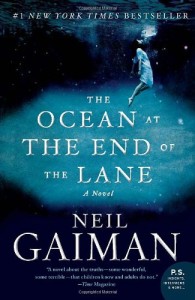
The Ocean at the End of the Lane, by Neil Gaiman
Summary
Published in June 2013, The Ocean at the End of the Lane tells the story of an unnamed man and a strange experience he faced in his youth. After returning to his childhood home for a funeral, the middle-aged narrator pays a visit to the farmhouse down the lane, where he met an extraordinary girl named Lettie Hempstock and her mother and grandmother when he was seven. While sitting at the edge of the pond behind the house – a pond Lettie had called an ocean – he suddenly recalls the details of the most fantastic and terrifying event of his past – “a past too strange, too frightening, too dangerous to have happened to anyone, let alone a small boy”.
Review
First off, I have to thank Vanessa Levin-Pompetzki for the book recommendation on her blog, since that’s where I first heard about this novel. I’m glad I stumbled upon her post, because the book really is a wonderful read. A fantasy tale narrated from the memories of a seven-year-old boy, the story touches on such themes as existentialism, the struggles between good and evil, and the discrepancies between childhood and adulthood.
What drew me in most about this book is the way it so subtly yet realistically depicts the simple qualities that make us human, such as curiosity and fear. The author does an excellent job of portraying the theme of self-identity throughout the story without emphasizing it too greatly; it was more of an impression left on me after finishing the book than a prominent point to focus on with every turn of the page. In that respect, I believe the author made a wise decision in creating a seven-year-old protagonist, as few adults in this world experience life as purely and innocently as children do.
This is another favorite theme of mine from the book: the divide between the world of children and the world of adults. From the beginning of the story, it’s implied that the middle-aged narrator sitting by the Hempstocks’ “ocean” feels somewhat disconnected from his youth, which he vaguely remembers as not being a particularly happy time in his life. Throughout his childhood memories, references are made to how differently grown-ups behave compared to children, as well as how difficult it would have been for him to make his parents understand what was happening at the time the strange events took place. Yet the author makes a point of illustrating how these differences are merely superficial; one of my favorite excerpts in the novel comes from a conversation between the narrator and Lettie about the true nature of adults:
Grown-ups don’t look like grown-ups on the inside either. Outside, they’re big and thoughtless and they always know what they’re doing. Inside, they look just like they always have. Like they did when they were your age. The truth is, there aren’t any grown-ups. Not one, in the whole wide world.
– Lettie Hempstock, The Ocean at the End of the Lane (Neil Gaiman, 2013)
Overall, Mr. Gaiman has constructed a beautiful work of art that readers of any age group can appreciate. Personally, I believe this novel would appeal mostly to adults for its deeper message of understanding the world and one’s own self, which many of us tend to forget as we grow older. Whether we need reminding to search for our true identities or to compare our past perspectives to our present outlook on life, The Ocean at the End of the Lane is a captivating read with the potential to leave its readers asking the simplest questions they didn’t even know were hidden in the depths of their minds.
Inspiration
In a way, The Ocean at the End of the Lane reminds me of The Little Prince in that the story centers on life and existence from the perspective of a child, with a gentle hint of fantasy to add to the intrigue of the narrative. I love stories that depict the world from the eyes of children, as such tales remind me of how I used to live when I was younger. For artists in particular, it’s interesting – if not essential – to remember the past once in a while, and there’s nothing like a well-written work of fiction to take us there in ways we never even imagined.
So if you too enjoy stories that can make you see the world and even your own life in a different light, I highly recommend giving this book a read. You may just catch a glimpse of yourself within the pages of Gaiman’s mysterious “ocean”.
by Naomi L. | December 17, 2014 | Blog, Creative Writing, Off The Bookshelf |
Remember when you were a kid, how you enjoyed reading or listening to holiday stories with your family at the end of the year? That was a good part of my childhood, as we had several Christmas-themed books sitting on our shelves when I was growing up. So to celebrate the season, here’s a brief review of a Christmas book we had when I was a kid: Treasury of Christmas Tales. Enjoy!
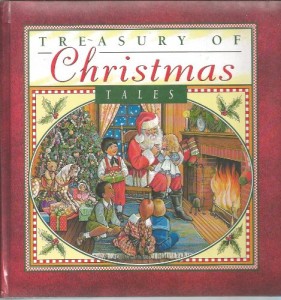
Treasury of Christmas Tales, by Carolyn Quattrocki
Summary
Treasury of Christmas Tales is a children’s book published around 1994 and consisting of a collection of classic Christmas stories. The book was put together by author Carolyn Quattrocki, and includes colorful illustrations by Susan Spellman and adaptions of works by writers such as Charles Dickens (“A Christmas Carol”), Clement C. Moore (“‘Twas The Night Before Christmas”), the Brothers Grimm (“The Elves and the Shoemaker”) and Hans Christian Andersen (“The Little Match Girl”). Written in simple text, Treasury of Christmas Tales contains 19 stories, all themed around Christmas and the winter holiday season:
- A Christmas Carol
- The Wishing Star
- The Little Match Girl
- The Christmas Mouse
- Jingle Bells
- The Magic Toy Shop
- The Littlest Angel
- The Twelve Days of Christmas
- The Christmas Bear
- ‘Twas the Night Before Christmas
- The Nutcracker
- Santa Claus is Coming to Town
- The Tiny Elf
- O Christmas Tree
- The Elves and the Shoemaker
- The Little Drummer Boy
- Christmas Carols
- The Happy Snowman
- Rudolph’s Adventure
Review
I remember I enjoyed reading this book with my mother and sisters when I was a child. Around the end of the year, my mom would read some of these tales to us while we followed along with the pictures, which really made for a fun family experience.
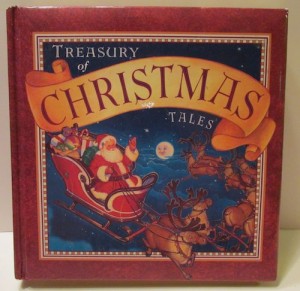
The 1994 edition of Treasury of Christmas Tales from my childhood
What I especially enjoyed about this book was how accessible the text was for us at our young age. Originally complex tales like “A Christmas Carol” were adapted into language that we as children could easily understand, but that didn’t lose the Christmas spirit of the story. Even sad tales like “The Little Match Girl” were told in a way that was uplifting and heartwarming. I also liked the colorful illustrations on every other page of the book, which made the stories even more comprehensible and memorable. It isn’t a broad collection for sure, but it does have good stories and illustrations that made it a joy for us to read every holiday season.
Inspiration
Though I hadn’t read this book since I was a kid, recently rediscovering it among my childhood belongings brought back pleasant memories of enjoying the holiday season with my family. It’s always fun to revisit stories from a happy time in your life, and the tales I enjoyed as a kid usually have a way of inspiring me to create stories of my own as an adult. So if you have some good holiday stories from your childhood, I encourage you to read them again this season. You may find just what you need to write your own cheerful Christmas tale!
by Naomi L. | October 8, 2014 | Blog, Creative Writing, Featured |
A year ago tomorrow, I shared a post on five points that are often overlooked in William Shakespeare’s timeless play, Romeo & Juliet. Now I’m back and inspired to strongly defend it a second time. Nowadays, it’s “cool” to criticize this story and dismiss it as a silly tale about two naïve infatuated teenagers whose irresponsible actions cause the deaths of six people, themselves included. I know because I used to be one of said critics. Since recently starting to learn more about this play, however, I’ve come to the conclusion that people need to stop being so cynical and start making an effort to appreciate the story Shakespeare was really trying to tell.
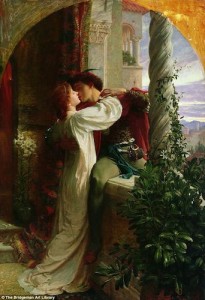
“Romeo and Juliet”, 1884, oil on canvas painting by Frank Bernard Dicksee
Fortunately, there are plenty of people who do understand what Romeo & Juliet is really about and who are more than willing to share their opinions on it. If you want to discover the real meaning of this story, start by following the “Defending RJ” tag on Tumblr. RomeoandJulietFan’s blog is also a must-read, as she does an excellent job of curating the best content defending this play. There are plenty of good points to be made on this side of the debate, but most arguments cover the same basic few.
So in the interest of revealing the true depth of this classic tale, today’s topic once again covers some important points often missed in my favorite Shakespearean play. Enjoy!
(Warning: the following post contains possible spoilers for Romeo & Juliet. If you’re one of the few people on the Internet who are not familiar with this tragic story, proceed with caution. Or you can just read a full summary of the plot here.)
True Love or Teen Fling?
This question seems to be at the heart of most R&J arguments, and understandably so. Still, it hardly makes sense to criticize a key element of a 16th-century play by 21st-century standards. While today it may seem silly to think two people can truly fall in love at first sight, remember that Shakespeare wrote his plays at a time when people thought fate was controlled by the stars and instant love was believed to be normal. It’s entirely possible that he did intend for his adolescent protagonists to be soulmates and for their love to be seen as genuine. There are several clues in the text to support this (one of my favorites being how the lovers’ first conversation reads as a sonnet), but the only way to know for sure would be to ask the playwright himself, so there may never be a definite consensus. It all comes down to interpretation.
So were Romeo and Juliet really in love, or did they just share a fiery passion that was doomed to burn out? This is the major point that most people miss: it doesn’t matter. Romeo & Juliet is a tragedy because whether their marriage was a testament to eternal love or a mistake made in the heat of the moment, they never got to find out. Had they lived in a different time or place where they didn’t constantly have to circumvent hostility, they could have been free to let their relationship run its course, however it might have played out. Instead, they meet an untimely end after an unfortunate mix-up forces them to make an unthinkable choice between (so they believed) facing life alone or being together eternally in death. Whatever their relationship was or could have been, it ended far too soon.
Which brings me to the next point…
Romeo & Juliet condemns Hate, not Love!
It baffles me how so-called R&J haters tend to blame the main characters for all the tragedies that unfold throughout the story (which I admit is ironic, given that I used to do the same). RomeoandJulietFan highlights this point perfectly in one of her rants: somehow everyone forgets that all the violence is a continuation of a feud established in the very first scene of the play, and not the fault of a couple of teenagers who were actually the only people from either family trying to escape the rivalry. Yes, Romeo and Juliet do make some poor choices themselves, but judging the completely natural impulsiveness of young people while excusing the irrational and destructive enmity of adults? Come on.
Now don’t get me wrong; in no way am I condoning the romanticization of teen suicide. But technically neither was Shakespeare. The message that should be taken from Romeo and Juliet’s deaths isn’t that lovers in a forbidden relationship should kill themselves, nor that teenagers who would willingly die for each other are stupid. It’s that hatred kills.
Think about it: none of the events leading up to the final tragedy would have happened if the Capulets and the Montagues had just gotten along from the start. Romeo and Juliet wouldn’t have had to keep their relationship a secret, Mercutio and Tybalt wouldn’t have died fighting for their houses’ honor, Friar Laurence wouldn’t have had to concoct the escape plan that failed, and these poor children never would have ended up in the depressing situation that drove them to suicide. By this logic, there’s only one conclusion that can be drawn from the plight of Romeo and Juliet: their families killed them.
So no, the real fools of the story are not the misguided teenagers who chose to pursue love against impossible odds. They’re the adults who should have known better, who should have invested their energy in lovingly raising their children instead of prolonging a feud that, as far as we can tell, had no justification to begin with. Not once throughout the entire play do we see Romeo directly interact with his parents; in fact, his only on-stage relationship with an adult is with Friar Laurence. Likewise, Juliet’s closest parental figure is her nurse, while the few conversations in which we ever see her parents express concern for her always have to do with marrying her off (to a complete stranger, no less). Even the friar and the nurse are guilty of making bad decisions, the former hatching high-risk plans that endanger the lovers’ lives and the latter abandoning her surrogate child in her hour of greatest need. However reckless the young protagonists may have been, it isn’t fair to criticize their poor judgment when it’s clear in the end that no one was there to protect them, whether it was from the feud or from themselves.
Taking all this into account, it’s actually quite amazing how greatly Romeo and Juliet contrast with every other character in the story. So perhaps we shouldn’t be focusing on their flaws so much as on their strengths…
Meet the real Romeo Montague and Juliet Capulet
R&J Hating 101 says that for every criticism of a bad decision made by one of the title characters, at least one reference must be made to their extreme youth. Yes, Romeo and Juliet were young, arguably too young for their story to have played out any other way. If you’ve jumped on this bandwagon, you’re no doubt overly familiar with the phrase “They were just kids!”, perhaps even having used it yourself.
Well, guess what? You were a kid once too. There was a time when you too believed that love could conquer all, that there might be one perfect person out there for you and if you found them, everything in your life would magically fall into place because destiny said you were supposed to be together forever. The major flaw in the logic behind R&J bashing is that the very trait for which the main characters are criticized is precisely what makes them realistic and relatable. Romeo and Juliet behaved exactly as would be expected of people their age, and if you can’t for one second imagine yourself in their place and sympathize with these idealistic lovers, then frankly I feel sorry for you.
So now that we’ve established that Romeo and Juliet were young, naïve and impulsive (i.e. normal teenagers), let’s take a closer look into the iconic characters Shakespeare so carefully constructed.
Romeo Montague is the literary epitome of the passionate lover. This is clear from his introductory scene, which already has him reciting romantic poetry and lamenting over an unrequited love. Yes, he claimed to love a girl named Rosaline before he fell for Juliet, but as I’ve pointed out before, this switch is important to demonstrate the difference between an infatuated boy and a young man in love. It also gives us an insight into his most defining characteristic: he loves to love. The fact that Romeo grew up surrounded by hatred and still chose to pursue romance above all else speaks volumes of his inherently good nature, and that alone entitles him to a little credit, even admiration.
Some character analyses point out that Romeo’s intense love for Juliet is an extension of his tendency to exaggerate emotion altogether, and it’s this for which he’s usually berated by critics. True, he should not have let his rage over Mercutio’s death drive him to murder Tybalt, nor should he have been in such a hurry to die after hearing the news of his wife’s “death”. Yet one must ask: if Romeo had not been such an emotional person, would his war-abolishing affair with Juliet ever have happened in the first place? Of course we shouldn’t condone his terrible choices, but we should at least acknowledge that he’s a well-rounded character whose personality consists equally of virtues such as loyalty, courage and honesty. The complexity of Romeo’s character is what makes him such a solid pillar of one of the most enduring love stories ever written… as is the case of his complementary “other half”.
Juliet Capulet undoubtedly undergoes the most substantial development of any character in the story. Of all the misinformed comments I ever used to make against this play, the most embarrassing is by far mistaking this brave young woman for a foolish submissive child. Much like Romeo, Juliet is established early on as an independent thinker by showing no interest in the same matters as her family (in her case, marriage). Unlike her lover, however, she tends to be more rational and does not let her emotions completely drive her actions, which is actually quite outstanding for a teenager in love.
Juliet is only thirteen, yet people judge her decisions as though she should have made them with the experience of a woman three times her age. Hardly anyone seems to recognize how impressive it is that a girl that young is clever enough to pull an older boy out of his romantic illusions and into a serious commitment. Within the first few minutes of meeting Romeo, Juliet already calls him out on his clichés with a shrewd “You kiss by th’ book” (1.5.114) and consequently inspires in him some of the most iconic love poetry in the history of English literature. Also notice in the famous balcony scene (Act II, Scene II) that Juliet does not let her profound love for Romeo blind her into wholeheartedly accepting his declarations of love, but instead challenges him to prove his devotion by marrying her. Her decision to reunite with her husband after his banishment is not made in haste; however reckless you think she may have been, you can’t deny it takes remarkable courage to give up the security of family and social status in order to pursue happiness. Even Juliet’s suicide takes more daring than Romeo’s (stabbing being far more painful than poisoning), yet she remains loyal to him until the very end, never doubting for one second that her rightful place is eternally by his side.
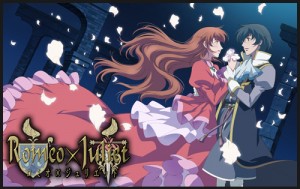
The star-crossed lovers as they appear in the anime adaptation, Romeo x Juliet
From my interpretation, Romeo and Juliet are a good match because they complete each other; Romeo is passionate and loyal, while Juliet is levelheaded and astute. As RomeoandJulietFan points out, the main characters likely connected so well because they were each exactly what the other needed at the time of their meeting. They were not simply hormonal teenagers acting out of lust; otherwise they could just as easily have given in to desire instead of getting married, or gone their separate ways at the first obstacle that forced them apart instead of striving to be together even in death. You can choose to believe it wasn’t true love, but you can’t say that what Romeo and Juliet had was anything but genuine.
Romeo & Juliet is far from an idealized love story, but that’s exactly the point. Young passion thwarted by circumstance is unquestionably the central theme of the play, and one can’t hope to appreciate Shakespeare’s beloved creation without making an effort to fully understand the intricate tale of star-crossed love that, 400 years after premiering on stage, still stands as a highly relevant theme in today’s artistic culture.
And if you still need convincing that all the hate around Romeo & Juliet is unjustified, do yourself a favor and read this post. It pretty much says it all.
I hope you’ve enjoyed reading about these important points of Romeo & Juliet! As you can see, this play is one of my favorites for several reasons, and I defend it in the hope that others may come to love it as much as I do. If you weren’t already, I hope I’ve made a Romeo & Juliet fan out of you! Thanks for reading!
References/Further Reading
by Naomi L. | January 22, 2014 | Blog, Creative Writing, Off The Bookshelf |
I wanted to start this year’s Off The Bookshelf posts with a review of a beautiful story that I finally got around to reading recently. I know I really should have read it (or rather, finished reading it) a long time ago, and after I did, I realized what I had been missing since I was a kid. So long overdue, here is a review of a classic tale by a French aviator and author: The Little Prince, by Antoine de Saint-Exupéry.
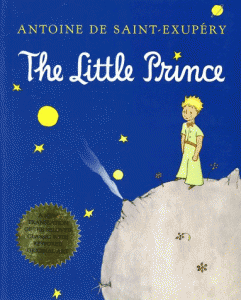
The Little Prince, by Antoine de Saint-Exupéry
Summary
The Little Prince (or Le Petit Prince, in its original French title) was first published in 1943 by Reynal & Hitchcock, in both English and French. Narrated in the first person, the book tells the story of a pilot who ends up stranded in the desert, where he meets a strange boy from a distant and tiny “planet” (which is really an asteroid). Over the eight days it takes him to fix his plane, the narrator gets to know the story of this “Little Prince”, from the life he had on his planet to the journey that brought him to Earth. The Little Prince enchants the pilot with his eccentric and poetic outlook on the world, and when the time comes for both of them to return home, the narrator is utterly heartbroken to lose the only friend he’s ever known who could appreciate life with the beautiful innocence of a child.
Review
What stands out most about this book is how it criticizes the “adult” way of thinking. The story begins with the narrator telling his readers how he was discouraged from pursuing art by grown-ups who couldn’t comprehend his drawings when he was younger. Since that time, the Little Prince was the first person he ever met who understood the vision he had as a child. Still very young himself, the Prince thus represents the simple way children see the world in contrast to the analytical views of adults, and does so in a way that makes the former much more appealing.
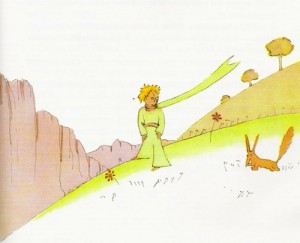
The Little Prince and the Fox
(Illustration by Antoine de Saint-Exupéry)
Though appearing to be a children’s book, The Little Prince is arguably targeted at adults who have forgotten how to understand the world the way they should. We as mature readers have it constantly pointed out to us that our manners are flawed, that we are too concerned with “matters of consequence”. Basically, we’ve become so focused on trivial details that we’ve lost sight of the things that are truly important. Perhaps this idea is most evident in a scene involving another well-spoken character of the story: a fox that the prince meets on his journey through Earth.
One sees clearly only with the heart. What is essential is invisible to the eye.
– The Fox, The Little Prince (Antoine de Saint-Exupéry, 1943)
The Little Prince is a charming tale fit for readers of all ages. For adults, it’s a reminder of the lessons that can be learned from youth, many of which may have been lost long ago. As for children, they can find embedded in these pages the encouragement to keep living their own special way, and, if nothing else, a friend who can teach them the real matters of so much importance.
Inspiration
If there’s one thing I loved most about this book, it was the way it constantly reminded me how I used to see the world when I was a little girl (and how I probably should see it again as a woman). Living in a world that seems to demand we grow up as quickly as possible, it’s easy to forget what it’s like to experience life through the innocent eyes of children. The Little Prince’s questions and observations, coupled with the grown-ups’ awkward answers, served as a lesson on how I should never lose touch with the curious child still in my heart, for to do so would be like losing a very special friend.
Overall, I enjoyed this book very much. Though it did break my heart a little, it was wonderful to read a story that could effortlessly shine light on the poetry children can bring to the world. The Little Prince has a lovely perspective on life, and after reading his story, I only hope I can remember to keep setting my inner child free. She is, after all, a very important friend to the grown-up writer I’ve become.
by Naomi L. | December 18, 2013 | Blog, Creative Writing, Off The Bookshelf |
It’s the holiday season, and that means it’s the perfect time to share a blog post about a Christmas-themed story! I had originally planned this post for next week (Christmas Day), but when I realized Christmas is also the last Wednesday of the year, I decided to bump this review up and save next week for a special post instead. So here it is a week early, a review of another of my favorite Dr. Seuss books: How The Grinch Stole Christmas!
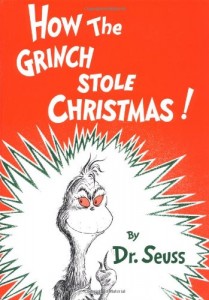
How The Grinch Stole Christmas!, by Dr. Seuss
Summary
Every Who down in Whoville liked Christmas a lot,
But the Grinch, who lived just north of Whoville, did NOT!
– How The Grinch Stole Christmas! (Dr. Seuss, 1957)
Originally published by Random House in 1957, How The Grinch Stole Christmas! tells the story of a grouchy creature known as the Grinch and his plot to ruin Christmas for the town of Whoville, located just south of his cave on Mount Crumpet. Annoyed every year by the festivities of the warm-hearted Whos, he dons a makeshift Santa Claus costume and descends into Whoville on Christmas Eve to steal all their presents, food and decorations, in the hope of stopping the holiday from ever arriving. Come Christmas morning, however, he is surprised to find that despite his best efforts to discourage them, the Whos still have the spirit of Christmas in them, and that day, the Grinch learns a valuable lesson about the true meaning of the holiday season.
Review
I’ve always appreciated How The Grinch Stole Christmas! for its uplifting message about the holiday spirit. With all the commercialization that Christmas has undergone over time, it’s easy to lose sight of the simpler things we should enjoy during the holidays, such as the company of our loved ones and all the possibilities that come with a new year. Puzzled to hear the Whos singing on Christmas morning, the Grinch starts to wonder why his plan didn’t work, and comes to a heartwarming revelation.
Maybe Christmas, he thought, doesn’t come from a store.
Maybe Christmas, perhaps, means a little bit more.
It probably goes without saying that the author’s intention with this story was to criticize the commercialization of Christmas. Interestingly, the Grinch has been compared to Seuss himself, who claimed to have found inspiration for the character after seeing a “Grinchy” face in the mirror on December 26th. His idea was to write this sour character in order to rediscover the meaning of Christmas, which he felt had been lost on him at some point in the past. The same way he did with Horton Hears a Who!, Dr. Seuss drew from his own life experience to tell a heartwarming story that readers of all ages can enjoy for its important lesson.
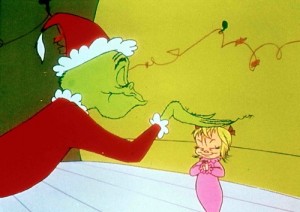
The Grinch and Cindy Lou Who, How The Grinch Stole Christmas! (1966)
Like most of Dr. Seuss’s children’s books, How The Grinch Stole Christmas! is written in rhyming verse and illustrated with colorful and bizarre characters, making it a fun and memorable read for the whole family. A noteworthy adaptation of the book is the 1966 TV special directed by Chuck Jones (of Looney Tunes fame). I remember watching it often as a kid and smiling every time the Grinch’s heart grew three sizes at the end of the story (not to mention Cindy Lou Who was probably the sweetest little thing I’d ever seen in a classic cartoon). It’s an adaptation I’d highly recommend, so if you haven’t seen it yet and it runs annually on TV in your region, be sure to watch it this holiday season! And while you’re at it, you may want to read the book again; it’s truly a Christmas classic!
Inspiration
What I find most inspiring about this book is the way it never fails to fill me with holiday cheer, regardless of the time of year. I enjoy a good story where the villain is the main character, and seeing the Grinch embrace the Christmas spirit helps me remember that there’s more to the holidays than presents (not that I ever needed much reminding, with a wonderful family like mine).
Overall, How The Grinch Stole Christmas! is a very enjoyable read, and one that should definitely be on every Seuss fan’s bookshelf. Whether I’m in the mood for his fun stories and illustrations or for his good life lessons, I always find something wonderful to enjoy in Dr. Seuss’s charming holiday tale! Enjoy, and have a very Merry Christmas!





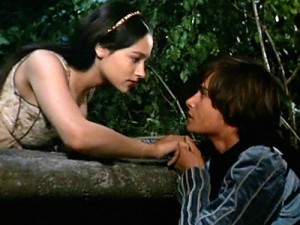
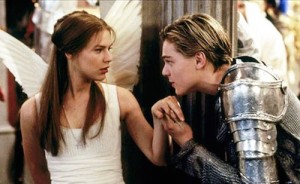
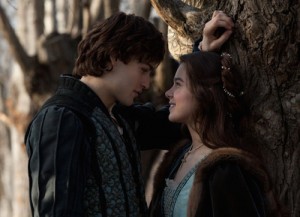
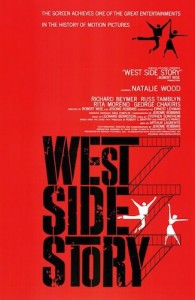






Recent Comments